From Green Beret to NFL Player and Advocate for Veterans
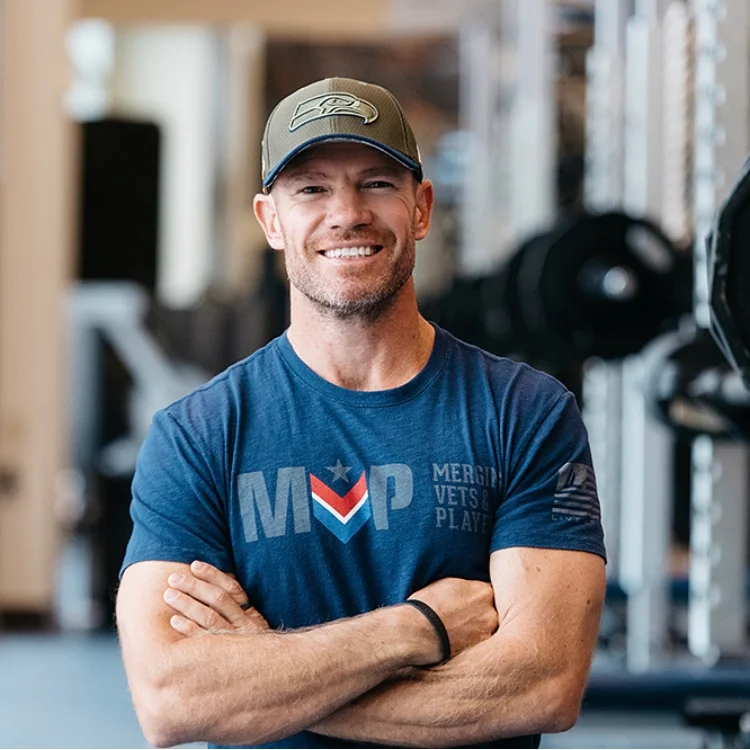
On September 11, 2001, 20-year-old Nate Boyer watched in horror as the events of that fateful day unfolded. The attacks jolted him out of his comfortable bubble, sparking a desire to find a greater purpose. Though the military had never crossed his mind before, this defining moment set him on a path that would see him traverse continents, serve in the military, play professional football, and ultimately co-found a vital support network for veterans and athletes.
Nate Boyer of Merging Vets and Players
In 2004, Boyer set off on a backpacking journey around the world, searching for meaning. While he explored new places, he still felt aimless—until he learned about the genocide occurring in the Darfur region of Sudan.
Determined to help, he contacted numerous NGOs, only to be met with rejection. “They told me it just wasn’t that simple,” Boyer recalls. Refusing to take no for an answer, Boyer flew to Chad on his own dime, spending 60 days there with a visa.
During his time in Chad, he felt he was making a difference, but it was also where he contracted malaria. As he recovered, he heard about the Battle of Fallujah on the radio. This pivotal moment steered him towards the military, and he joined the Army’s 18X program, also known as the Special Forces Enlistment Option, which is a program that allows individuals to enlist in the Army with a guaranteed opportunity to attempt to become a Green Beret.
Boyer succeeded and served as a Green Beret before an unlikely mascot helped guide his next steps. He was deployed to Iraq in 2008-2009, and as his active duty time ended, something caught his eye. “In the Army at least, the most popular sports logo was the Texas Longhorn,” Nate laughed. “That informed my decision to move to Austin for college once I was out.”
Encouraged by his best friend, Brad Keys, who tragically passed away in 2012, Boyer decided to walk on to the University of Texas football team, despite never having played a down of organized football. He redshirted his freshman year in 2010 and made his debut in 2011 against Texas Tech as a member of the kickoff team. Balancing his duties in the National Guard, Boyer deployed again on two 180-day rotations to Afghanistan before his junior and senior seasons.
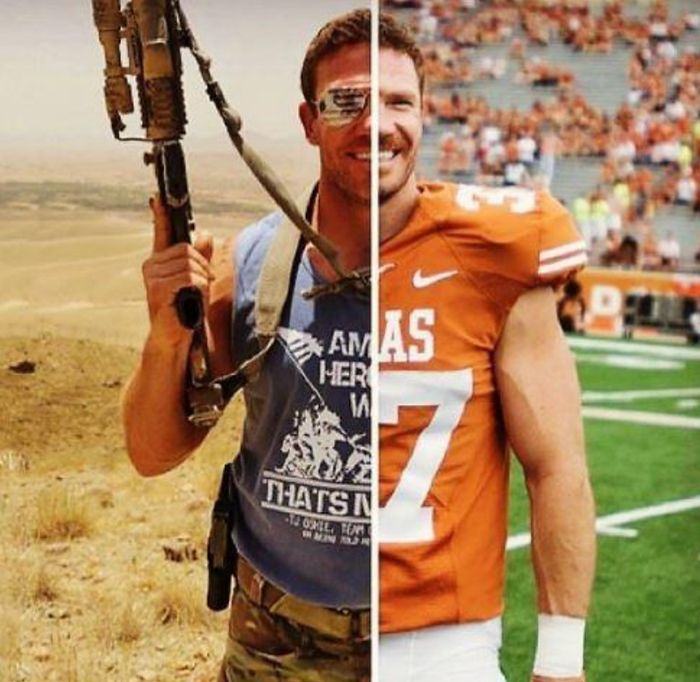
He later became the team’s starting long snapper, playing 38 consecutive games for the Longhorns. From 2012 to 2014, Boyer was a first-team Academic All-Big 12 Conference member, and an Academic All-American in 2014. He was also named the 2012–13 Big 12 Sportsperson of the Year, becoming the third Longhorn to receive this honor, and was the inaugural winner of the Armed Forces Merit Award. Additionally, he was a semifinalist for the William V. Campbell Trophy in 2013.
In 2014, Boyer’s senior year at UT, he faced a crucial decision: re-enlist or chase another dream. Choosing the latter, Boyer was honorably discharged from the military after six years of service. He played one game for the Seattle Seahawks as a long snapper in 2015, and while his time in the NFL was short-lived, it opened doors to new opportunities and connections. One such connection was Jay Glazer, a television personality and sports reporter, who took Boyer under his wing, helping him bulk up and secure an agent. When Boyer was cut from the Seahawks, Glazer suggested they co-found Merging Vets and Players (MVP).
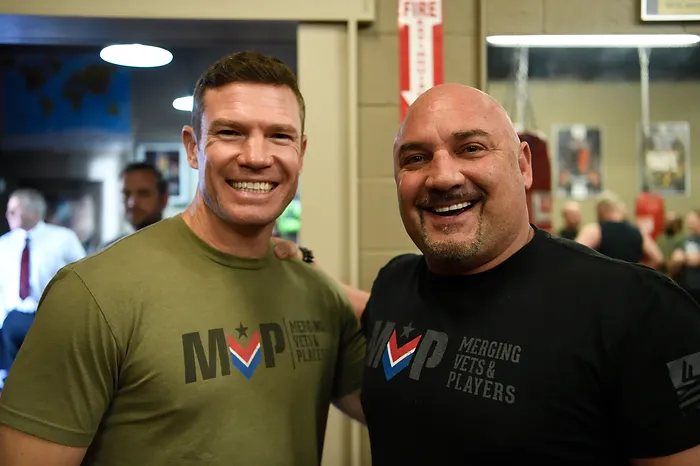
MVP was born from the recognition that both former professional athletes and military veterans often struggle to adjust to “civilian” life after their careers end. “For former professional athletes and military members, they tend to lose their identity and purpose when they lose their uniform,” Boyer explains. The loss of camaraderie, identity, and purpose can be a daunting challenge. MVP provides a support network, helping these individuals find a new sense of belonging and purpose.
MVP’s programs are designed to address the unique challenges faced by veterans and former athletes. Weekly MVP meetings allow these individuals to share their experiences and support one another through peer-to-peer coaching, physical fitness, and community-building activities.
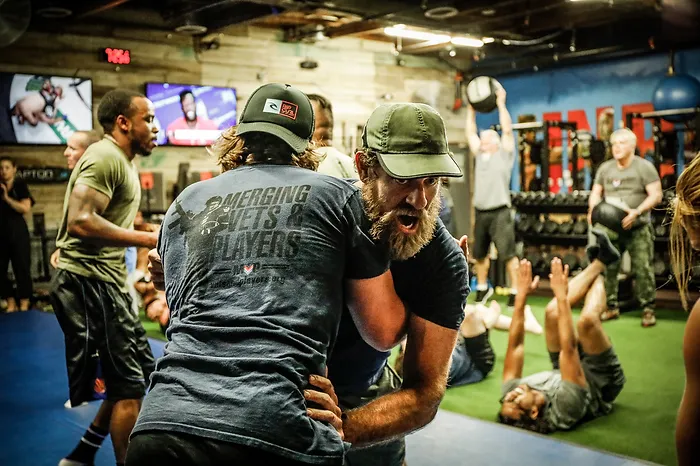
Boyer emphasizes the importance of offering veterans access to resources and support, acknowledging that while many organizations exist, it can be difficult for veterans to seek help or even know where to begin. “There are lots of resources and VSOs, but it’s sometimes difficult for vets to think of using them. There can be a lot of complexities. It’s also hard for civilians to know what to do and what to ask,” he notes.
The MVP program brings together former professional athletes and military veterans for a free weekly 45-minute workout session followed by an informal peer-to-peer discussion called “The Huddle.” This initiative empowers both groups by reconnecting them after their uniforms come off, providing them with a new team to assist with the transition, promote personal development, and remind them they are never alone.
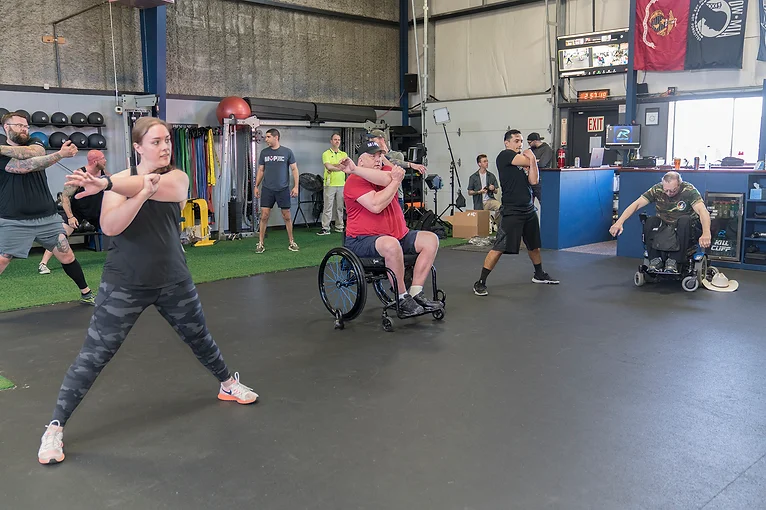
It fosters a sense of community, where unbreakable bonds are formed, camaraderie is established, and lives are forever changed. For two of the most at-risk populations—former pro athletes and U.S. military veterans, particularly those who served in the Afghanistan and Iraq wars—this support is invaluable.
MVP’s impact is profound. To date, the program has served over 2,000 combat veterans and 1,000 former professional athletes, saving lives and creating a lasting difference.
The impact of MVP extends beyond its members, reaching into the wider community and fostering a culture of understanding and support. By creating a space where veterans and athletes can rediscover their purpose, MVP helps them transition smoothly into civilian life. The organization also provides resources for family members, recognizing that the transition period affects not only the individual but also their loved ones.
Boyer’s journey from soldier to football player to advocate is a testament to resilience and the power of community. Through MVP, he continues to serve, ensuring that both veterans and former athletes have the support they need to navigate their transitions and find a new team and a new mission.
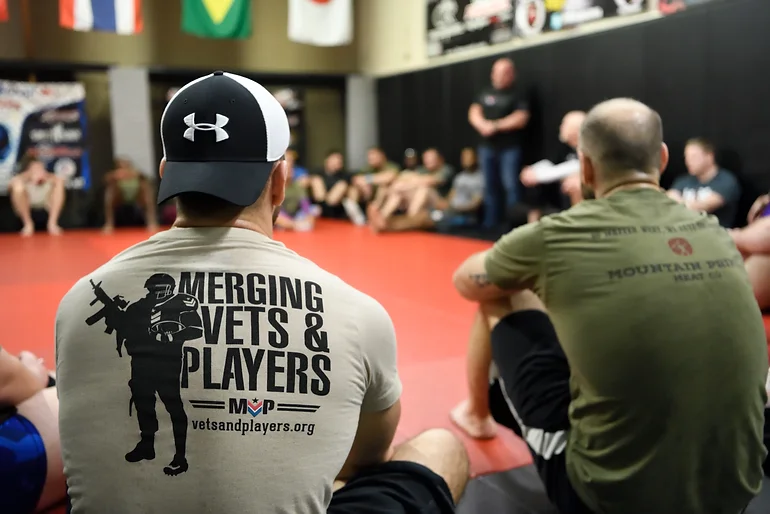
“My piece of advice for anyone making a transition is to offer what they’re good at or have access to for other veterans,” Boyer said. “You never know what kind of impact you can have on someone else’s life. If it helps even one other person – it’s enough.”
At Mission Roll Call, we understand the unique challenges veterans face when transitioning to civilian employment. Boyer’s story resonates deeply with our mission to amplify the voices of veterans and provide them with the support they need. Many of our members share Nate’s sentiment that the transition period can be incredibly challenging.
By sharing stories like Nate Boyer’s, we aim to highlight the resilience and determination of veterans and their families, inspiring others and connecting them with vital resources. At Mission Roll Call, we care about these stories because they underscore the importance of community, support, and finding a new purpose—values that are at the heart of everything we do and those we serve.
To learn more about Merging Vets and Players and to get involved with a chapter near you, visit VetsandPlayers.org.
Do you have a story to share with Mission Roll Call? We’d love to hear from you and help impact the lives of more veterans and their families. Please connect with us and consider becoming a member here.